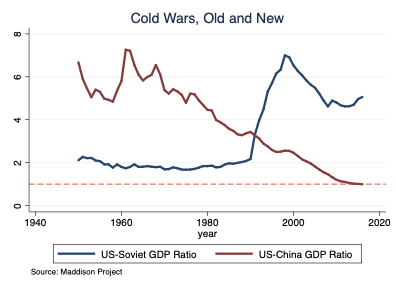only a fool will fancy he can inflate away his debt obligation. inflation can only be tamed when real interest rate is positive. and the graph you used certainly assume the 9 trillion sit on Fed's balance are not debt.
Inflation is currently driven to a significant extent by sky-rocketing energy prices. These prices will stagnate and eventually climb back down in the coming 12-18 months, which means inflation pressures will ease. On top of that, the Fed will begin to taper QE and begin rate hikes. I wouldn't be too worried about inflation in the situation of the US.
If it wanted to, the Fed can completely self-fund the US financing needs without any risk since the US is the hegemon of the world's financial system, i.e. it has exorbitant privilege. This is something a lot of people struggle to understand, especially "hard money" types.
More generally, while I don't think inflation above 5% is good, there's nothing inherently to fear from 3-4% inflation to inflate away the debt. That's what happened to the UK's post-Napoleonic debt. It still has some debt that it pays from that era, over 200 years later. Shows you that "paying off your debt" is irrelevant. What matters is whether it reduces over time in relation to your economic size and how your debt-carrying capacity is. In this regard, moderate inflation (3-4%) is helpful. Deflation is a much bigger problem; just ask the Japanese.

